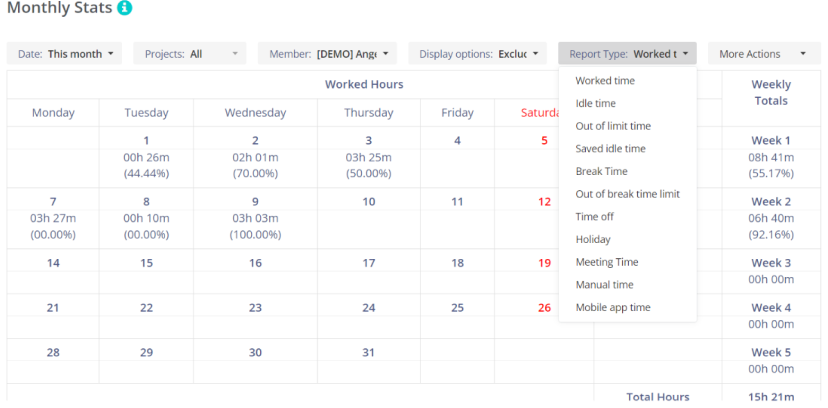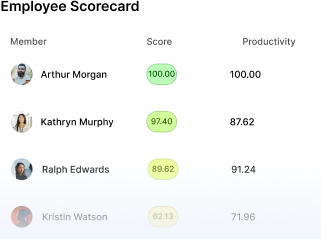Best HR Software in Australia: A Comprehensive Guide

In today’s fast-paced business environment, effective human resource management is more critical than ever. From recruitment and payroll to performance management and compliance, HR processes can be overwhelming without the right tools. HR software has become essential for Australian businesses seeking to streamline these tasks, improve productivity, and enhance employee engagement. This article explores the best HR software available in Australia, why businesses are turning to HR systems, tips for selecting the right software, and advice for implementing it successfully.
What is HRIS Software?
HRIS (Human Resource Information System) software is a digital platform designed to manage, automate, and streamline various human resource (HR) processes within an organization. It centralizes employee data and helps HR teams handle tasks such as payroll, recruitment, benefits administration, performance management, and compliance with labor regulations. HRIS software integrates multiple HR functions into one system, providing a comprehensive solution for managing the entire employee lifecycle, from hiring to retirement.
What Does HRIS Software Do?
HRIS software performs a wide range of functions, including:
Why Businesses Are Turning to HR Systems Software
HR systems software helps businesses automate time-consuming administrative tasks such as payroll, leave tracking, recruitment, and performance evaluations. With HR software, businesses can centralize employee data, improve compliance with local labor laws, and provide employees with self-service portals to manage their own HR needs.
As organizations grow, managing human resources manually becomes inefficient and error-prone. HR software not only boosts productivity but also provides insights through real-time analytics, helping businesses make data-driven decisions. Additionally, these systems enhance employee satisfaction by offering seamless onboarding experiences, clear communication channels, and simplified processes like leave requests and pay-slip access.
Maximize productivity of your business
Track employee productivity and simplify work with them
Best HR Software in Australia
Here are nine of the top HR software solutions in Australia that cater to businesses of all sizes and industries:
Monitask
Monitask appears to be a suitable HR software for tracking time, attendance, leave, and employee productivity. It offers automated time tracking across various platforms including Windows, Mac, Linux, iOS, Android, and Chrome. There is a 10 days free trial period. Monitask integrates with popular tools and platforms, such as Slack and Trello, making it easy to incorporate into your existing workflow. Also, it offers several different plans for businesses and Stealth Mode for company owned computers.
Key Features:
- The HR software provides activity – takes screenshots, counts daily activity and keeps a detailed log of the user’s actions.
- Monitask features task management capabilities, allowing admins to assign tasks to team members or import tasks from existing project management software.
- It also includes team analytics to create organizational structure within Monitask and generate reports for each team (Clock-in/Clock-out and others). These reports provide valuable data that can be used to identify bottlenecks, allocate resources effectively, and make informed business decisions.
- Monitask can be used as a HRIS software as admins can create vacation schedules, payrolls and invoices based on tasks performed and time worked.
- The software fully automates the process of personnel management: administer timesheets and shift schedules efficiently. This ensures that the right resources are allocated to the right tasks at the right time.
- Additional screenshots can be purchased for a fee if needed.
- Does not irritate employees and works on the principle of transparency – a person starts the system and terminates it himself, the system does not record keystrokes and confidential data.


Deputy
Deputy is a comprehensive HR software solution designed to streamline workforce management for businesses of all sizes. It simplifies scheduling, time tracking, and task management, helping managers improve team productivity and compliance. With Deputy, employees can clock in and out, request shifts, and manage their work schedules, all from a user-friendly interface. The platform also integrates with various payroll systems for seamless processing.
Key Features:
- Shift scheduling and time tracking
- Employee self-service portal
- Task management tools
- Payroll integration
- Mobile app for remote access

Ascender
Ascender is an advanced HR software tailored for payroll and workforce management. It supports global payroll processing, ensuring compliance with local tax regulations. Ascender offers tools for managing employee data, attendance, and leave, making it a powerful solution for handling complex HR needs across different regions. Its comprehensive reporting feature helps businesses make informed decisions about their workforce.
Key Features:
- Global payroll management
- Employee attendance tracking
- Leave management
- Customizable reporting tools
- Integration with third-party applications

FoundU
FoundU is an HR software platform built to simplify the recruitment, onboarding, and workforce management process. It enables companies to manage the entire employee lifecycle from a single platform, offering tools for rostering, payroll, and compliance management. FoundU’s automation features reduce administrative tasks, making it ideal for growing businesses looking to scale efficiently.
Key Features:
- End-to-end employee management
- Automated rostering and payroll
- Compliance tracking
- Employee onboarding tools
- Real-time workforce analytics

ADP Workforce Now
ADP Workforce Now is a cloud-based HR software that provides businesses with comprehensive tools for managing payroll, benefits, talent, and workforce. It is designed to streamline HR operations with features like time tracking, compliance reporting, and benefits administration. ADP Workforce Now integrates with other business systems, ensuring seamless data flow and improving overall efficiency.
Key Features:
- Payroll and tax management
- Time and attendance tracking
- Benefits administration
- Compliance tools
- Employee self-service portal

BambooHR
BambooHR is a leading HR software solution that helps small to mid-sized businesses manage essential HR functions such as onboarding, employee records, and performance management. It provides a user-friendly interface that simplifies tracking time off, benefits, and employee development. BambooHR’s reporting features allow HR teams to make data-driven decisions that enhance employee engagement and productivity.
Key Features:
- Onboarding and employee records management
- Time-off tracking
- Performance management
- Customizable reports
- Applicant tracking system (ATS)

Elmo
Elmo is an all-in-one cloud-based HR software that offers a wide range of solutions for recruitment, payroll, performance management, and learning. It caters to businesses of all sizes, focusing on reducing administrative burdens and improving overall workforce efficiency. Elmo’s modular system allows organizations to choose and integrate only the features they need.
Key Features:
- Recruitment and onboarding
- Performance management tools
- Learning and development modules
- Payroll management
- Workforce analytics

Bob
Bob is a modern HR software designed to foster employee engagement and streamline HR processes for growing businesses. It offers tools for managing employee data, onboarding, time tracking, and performance reviews. Bob emphasizes employee experience and engagement with features like custom surveys, pulse checks, and culture management tools.
Key Features:
- Employee data and engagement tracking
- Onboarding and offboarding
- Performance management
- Custom surveys and pulse checks
- Time and attendance tracking

Rippling
Rippling is an HR software that combines payroll, benefits, and IT management into one unified platform. It allows businesses to manage the entire employee lifecycle, from onboarding to payroll, device management, and app provisioning. Rippling automates administrative tasks, ensuring HR teams focus on strategic goals rather than manual processes.
Key Features:
- Payroll and benefits administration
- Onboarding and offboarding
- IT and device management
- Workflow automation
- Compliance management

How to Choose the Right HR Software for Your Business in Australia
When selecting the best HR software for your business in Australia, it’s essential to consider several key factors that will impact its effectiveness and suitability. The size of your business plays a crucial role in determining which software will meet your needs. Smaller businesses might prefer simpler systems with basic features, while larger organizations often require more comprehensive solutions that can scale with growth. Additionally, the features offered by the software should align with your specific HR needs. Whether you’re focused on payroll, recruitment, performance management, or compliance, the software should support these functions effectively.
Your budget is another critical factor, as HR software comes with varying price points. Some options offer flexible pricing plans, while others require significant upfront investment. It’s important to weigh the cost against the value of the features you’re getting. Integration capabilities also matter—especially if your business already uses other software, such as accounting or CRM systems. Ensuring the HR software integrates smoothly with existing platforms will streamline operations. Lastly, ease of use is paramount. The software should be intuitive for both your HR team and employees, reducing the learning curve and ensuring a smooth adoption process.
Tips for Implementing HR Software
Conclusion
HR software is an essential tool for businesses in Australia to improve efficiency, streamline processes, and enhance employee satisfaction. With a range of options available, such as BambooHR, Employment Hero, and Xero Payroll, companies can choose a solution tailored to their specific needs. By carefully considering factors like business size, budget, and necessary features, organizations can successfully implement HR software that supports their long-term goals.
– The Monitask Team
Frequently Asked Questions
Is human resource management in demand in Australia?
Yes, human resource management is in high demand in Australia, especially as businesses prioritize improving employee experience and complying with evolving labor laws. The demand for HR professionals with expertise in digital HR solutions and data analytics is also growing.
What is the best technology for HR?
The best technology for HR depends on your business needs. Cloud-based HR software, such as BambooHR or Employment Hero, is highly popular for its scalability, ease of use, and ability to automate processes. AI and data analytics are also becoming increasingly important for talent management and decision-making.
How do I become an HR in Australia?
To become an HR professional in Australia, most individuals pursue a bachelor’s degree in human resource management or a related field. Further certifications, such as a postgraduate diploma or an MBA with an HR focus, can enhance your career prospects. Gaining work experience through internships or entry-level HR positions is also key to building a successful HR career.



